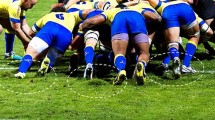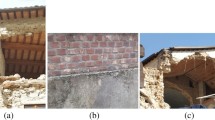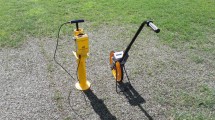Abstract
In Thoroughbred dirt racetracks, clay content plays a critical role in moisture management and influences mechanical properties. We hypothesized that different dirt track designs developed in response to the track materials used, particularly the clay content of the material. These designs are in turn a function of the local climate, in particular the amount of rainfall and the evaporation rate. X-ray diffraction makes it possible to determine whole rock and clay mineralogy for 26 tracks that were assigned to one of three track designs: shallow sand (SS), false base (FB), or false base with a pad (FBP). Results demonstrate that SS tracks occur in areas with the highest annual precipitation and have the lowest average clay content, whereas FBP tracks have the lowest annual precipitation and the highest average clay content. FB tracks have intermediate levels of precipitation and clay relative to other track styles. Understanding the effects of clay minerals in dirt and how different racetrack designs have evolved to handle differing levels of clay and moisture can aid in quantifying track maintenance decisions.




Similar content being viewed by others
Abbreviations
- XRD:
-
X-ray diffraction
- SS:
-
Shallow sand
- FB:
-
False base
- FBP:
-
False base with a pad
References
Setterbo JJ, Garcia TC, Campbell IP, Reese JL, Morgan JM, Kim SY, Hubbard M, Stover SM (2009) Hoof accelerations and ground reaction forces of Thoroughbred racehorses measured on dirt, synthetic, and turf track surfaces. Am J Vet Res 70(10):1220–1229. doi:10.2460/ajvr.70.10.1220
Peterson MM, Roepstorff L, Thomason JJ, Mahaffey C, McIlwraith CW (2011) Racing surfaces white paper
Thomason JJ, Peterson ML (2008) Biomechanical and mechanical investigations of the hoof–track interface in racing horses. Veterinary Clin Equine Pract 24:53–77
Ratzlaff MH, Wilson PD, Hutton DV, Slinker BK (2005) Relationships between hoof-acceleration patterns of galloping horses and dynamic properties of the track. Am J Vet Res 66(4):589–595
Peterson ML, McIlwraith CW (2008) Effect of track maintenance on mechanical properties of a dirt racetrack: a preliminary study. Equine Veterinary J 40(6):602–605. doi:10.2746/042516408x330347
Peterson ML, McIlwraith CW, Reiser RF (2008) Development of a system for the in situ characterisation of thoroughbred horse racing track surfaces. Biosyst Eng 101(2):260–269. doi:10.1016/j.biosystemseng.2008.07.007
Pratt GW (1985) Racetrack surface biomechanics. Equine Veterinary Data 6:193–202
Ratzlaff MH, Hyde ML, Hutton DV, Rathgeber RA, Balch OK (1997) Interrelationships between moisture content of the track, dynamic properties of the track and the locomotor forces exerted by galloping horses. J Equine Veterinary Sci 17(1):35–42. doi:10.1016/s0737-0806(97)80456-x
Al-Shayea NA (2001) The combined effect of clay and moisture content on the behavior of remolded unsaturated soils. Eng Geol 62(4):319–342
Mulqueen J, Stafford JV, Tanner DW (1977) Evaluation of penetrometers for measuring soil strength. J Terramechanics 14(3):137–151. doi:10.1016/0022-4898(77)90012-x
Rosenqvist IT (1984) the importance of pore water chemistry on mechanical and engineering properties of clay soils. Philos Trans R Soc Lond Ser A Math Phys Sci 311(1517):369–373
Williams J, Prebble RE, Williams WT, Hignett CT (1983) The influence of texture, structure and clay mineralogy on the soil moisture characteristic. Aust J Soil Res 21(1):15–32. doi:10.1071/SR9830015
Craig RF (2004) Soil mechanics, 7th edn. Spon Press, London
Nettleship I, Cisko L, Vallejo LE (1997) Aggregation of clay in the hydrometer test. Can Geotech J 34(4):621–626. doi:10.1139/t97-026
ASTM (2007) Standard test method for particle-size analysis of soils. Book of standards. vol 04.08, vol ASTM D422. ASTM International, West Conshohocken, PA. doi:10.1520/D0422-63R07
Lu N, Ristow GH, Likos WJ (2000) The accuracy of hydrometer analysis for fine-grained clay particles. Geotech Test J 23(4):487–495
Hubert F, Caner L, Meunier A, Lanson B (2009) Advances in characterization of soil clay mineralogy using X-ray diffraction: from decomposition to profile fitting. Eur J Soil Sci 60(6):1093–1105. doi:10.1111/j.1365-2389.2009.01194.x
Moore DM, Reynolds RC Jr (1997) X-ray diffraction and the identification and analysis of clay minerals. Oxford University Press, New York
Peterson MM, Thomason JJ, McIlwraith CW (2010) Overview of the foot/surface relationship in racehorses. Paper presented at the proceedings of the 2010 American College of Veterinary Surgeons Meeting, Seattle, WA, October 21–23, 2010
Bish DL, Reynolds RC (1989) Sample preparation for X-ray diffraction. Rev Mineral Geochem 20(1):73–99
Howard SA, Preston KD (1989) Profile fitting of powder diffraction patterns. Rev Mineral Geochem 20(1):217–275
Post JE, Bish DL (1989) Rietveld refinement of crystal structures using powder X-ray diffraction data. Rev Mineral Geochem 20(1):277–308
ASTM (2007) Standard test methods for moisture, ash, and organic matter of peat and other organic soils. Book of standards. Vol: 04.08, vol ASTM D2974. ASTM International, West Conshohocken, PA. doi:10.1520/D2974-07A
National Climatic Data Center (2011) US climate normals. National Oceanic and Atmospheric Administration. http://www.ncdc.noaa.gov/oa/ncdc.html. Accessed June 28, 2011 2011
National Climatic Data Center (2011) Climatic wind data for the United States. National Oceanic and Atmospheric Administration. http://www.ncdc.noaa.gov/oa/mpp/wind1996.pdf. Accessed June 28, 2011 2011
Guisasola I, James I, Llewellyn C, Stiles V, Dixon S (2010) Quasi-static mechanical behaviour of soils used for natural turf sports surfaces and stud force prediction. Sports Eng 12(2):99–109. doi:10.1007/s12283-010-0035-2
Spoor G, Godwin RJ (1979) Soil deformation and shear strength characteristics of some clay soils at different moisture contents. J Soil Sci 30(3):483–498. doi:10.1111/j.1365-2389.1979.tb01003.x
Awadhwal NK, Thierstein GE (1985) Soil crust and its impact on crop establishment: a review. Soil Tillage Res 5(3):289–302. doi:10.1016/0167-1987(85)90021-2
Oikawa M, Ueda Y, Inada S, Tsuchikawa T, Kusano H, Takeda A (1994) Effect of restructuring of a racetrack on the occurrence of racing injuries in thoroughbred horses. J Equine Veterinary Sci 14(5):262–268. doi:10.1016/s0737-0806(06)81951-9
Hamza MA, Anderson WK (2005) Soil compaction in cropping systems: a review of the nature, causes and possible solutions. Soil Tillage Res 82(2):121–145. doi:10.1016/j.still.2004.08.009
Sillon JF, Richard G, Cousin I (2003) Tillage and traffic effects on soil hydraulic properties and evaporation. Geoderma 116(1–2):29–46. doi:10.1016/s0016-7061(03)00092-2
Acknowledgments
XRD samples were separated at the Racing Surfaces Testing Laboratory with analysis and surface sample preparation by James P. Talbot, K/T GeoServices, Inc. Funding was provided by the Grayson-Jockey Club Research Foundation, the founding sponsors of the Racing Surfaces Testing Laboratory and the Churchill Downs Incorporated Safety from Start to Finish Initiative.
Author information
Authors and Affiliations
Corresponding author
Rights and permissions
About this article
Cite this article
Mahaffey, C.A., Peterson, M. & McIlwraith, C.W. Archetypes in Thoroughbred dirt racetracks regarding track design, clay mineralogy, and climate. Sports Eng 15, 21–27 (2012). https://doi.org/10.1007/s12283-012-0082-y
Published:
Issue Date:
DOI: https://doi.org/10.1007/s12283-012-0082-y




